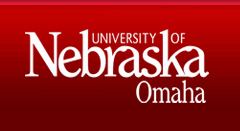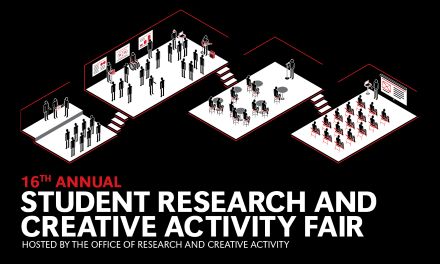Examining language development through play: How young children verbally interact while engaging in mobile exhibits in Museum Without Walls
Presenter Type
UNO Undergraduate Student
Major/Field of Study
Teacher Education
Advisor Information
Amanda Steiner
Location
MBSC Ballroom Poster # 507 - U
Presentation Type
Poster
Start Date
24-3-2023 1:00 PM
End Date
24-3-2023 2:15 PM
Abstract
Children develop language skills through interactions with others. Community spaces, like the Omaha Children’s Museum, offer engaging and interactive environments for children to practice their skills and develop their vocabularies. In this qualitative research project, Examining language development through play: How young children verbally interact while engaging in mobile exhibits in Museum Without Walls, we explore children’s linguistic skills and language development in the context of both the mobile exhibits of the Omaha Children’s Museum’s Museum Without Walls and the brick and mortar Omaha Children’s Museum. Research and data collection focused on three main questions. In what ways do families use verbal interactions in play? What types of interactions are young children having with other children while engaging with and in Museum Without Walls? How do young children and adults leverage verbal interactions while playing within the mobile exhibit to extend play? Data collected throughout the summer and into fall highlights several findings, including that young children who appear to be withdrawn tend to engage more in play when another individual initiates verbal interaction. Data also suggests that parallel play extends beyond the traditional age range where it is present. These findings give insight into the possible long-term effects that the recent Coronavirus pandemic and subsequent lockdowns within our communities have had on young children’s language development. Given this information, continued areas of study present themselves. How are young children interacting with both their peers and adults in a school setting, and how are teachers combatting the long-term effects of the Coronavirus pandemic in their classrooms? How will community spaces, like the Omaha Children’s Museum, create more engaging experiences for families to help their children continue developing language skills?
Scheduling
9:15-10:30 a.m., 10:45 a.m.-Noon, 1-2:15 p.m., 2:30 -3:45 p.m.
Examining language development through play: How young children verbally interact while engaging in mobile exhibits in Museum Without Walls
MBSC Ballroom Poster # 507 - U
Children develop language skills through interactions with others. Community spaces, like the Omaha Children’s Museum, offer engaging and interactive environments for children to practice their skills and develop their vocabularies. In this qualitative research project, Examining language development through play: How young children verbally interact while engaging in mobile exhibits in Museum Without Walls, we explore children’s linguistic skills and language development in the context of both the mobile exhibits of the Omaha Children’s Museum’s Museum Without Walls and the brick and mortar Omaha Children’s Museum. Research and data collection focused on three main questions. In what ways do families use verbal interactions in play? What types of interactions are young children having with other children while engaging with and in Museum Without Walls? How do young children and adults leverage verbal interactions while playing within the mobile exhibit to extend play? Data collected throughout the summer and into fall highlights several findings, including that young children who appear to be withdrawn tend to engage more in play when another individual initiates verbal interaction. Data also suggests that parallel play extends beyond the traditional age range where it is present. These findings give insight into the possible long-term effects that the recent Coronavirus pandemic and subsequent lockdowns within our communities have had on young children’s language development. Given this information, continued areas of study present themselves. How are young children interacting with both their peers and adults in a school setting, and how are teachers combatting the long-term effects of the Coronavirus pandemic in their classrooms? How will community spaces, like the Omaha Children’s Museum, create more engaging experiences for families to help their children continue developing language skills?

